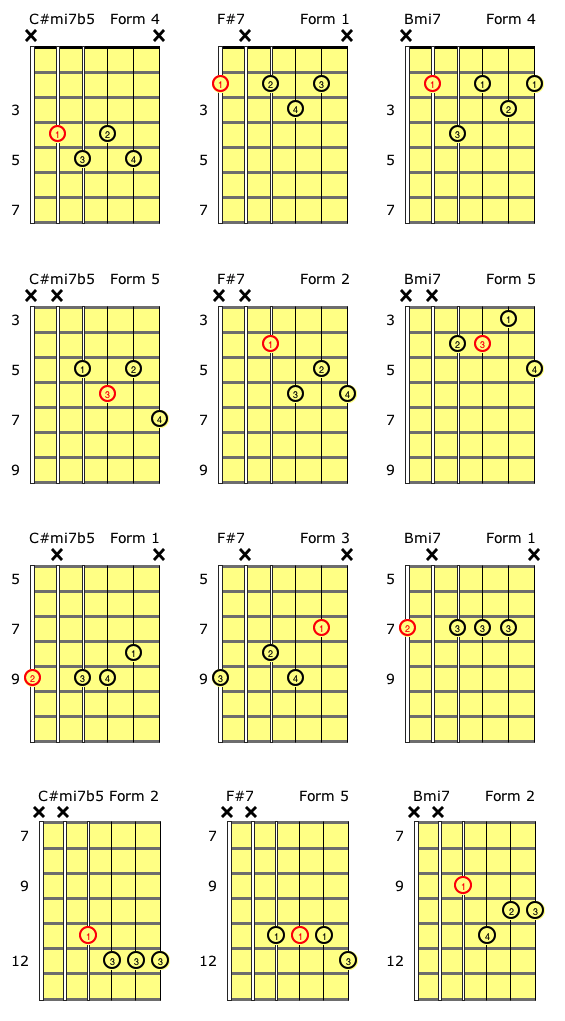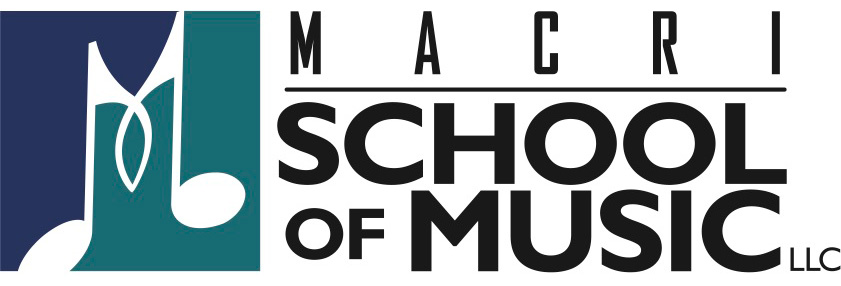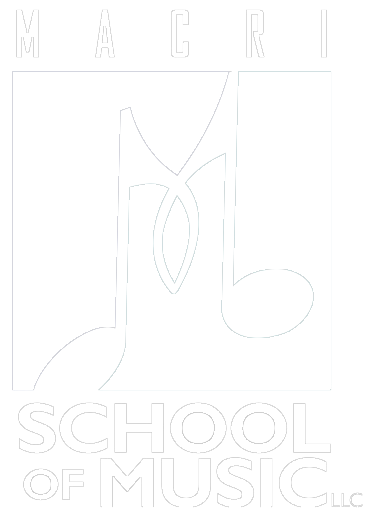ii-V-I Jazz Progressions
One of the most important progressions in jazz is the ii-V-I. You will find this chord progression in most jazz standards ranging from swing to bebop. In a previous jazz lesson, we learned five chord forms and applied them to a chord scale. In this lesson we are going to take those chords and play different inversions of a ii-V-I.
The chords listed in figure one are diatonic seventh chords in the key of D major. The highlighted chords indicate the major ii-V-I progression (Emi7 – A7 – Dmaj7).
Figure 1.
I. Dmaj7
II. Emi7
III. F#mi7
IV. Gmaj7
V. A7
VI. Bmi7
VII. C#mi7b5
Figure two illustrates four different ways to play a major ii-V-I progression in the key of D. The two and five chords(Emi7-A7) are unresolved and resolve to the one chord (Dmaj7).
Figure 2.

The chords listed in figure three are the diatonic seventh chords in the key of B minor. The highlighted chords indicate the minor ii-V-I progression (C#mi7b5 – F#7 – Bmi7).
Figure 3.
I. Bmi7
II. C#mi7b5
III. Dmaj7
IV. Emi7
V. F#7 (borrowed from the harmonic minor)
VI. Gmaj7
VII. A7
Figure 4 demonstrates four ways to play the minor ii-V-I progression in the key of Bm. The ii-V(C#mi7b5-F#7) chords are also unresolved and resolve to the I(Bmi7) chord.
Figure 4.

Practice and memorize these 2-5-1 chord patterns and apply them to all keys. Remember that hundreds of jazz tunes can be broken down into ii-V-I progressions, and is one of the most important tools used in jazz harmony.


